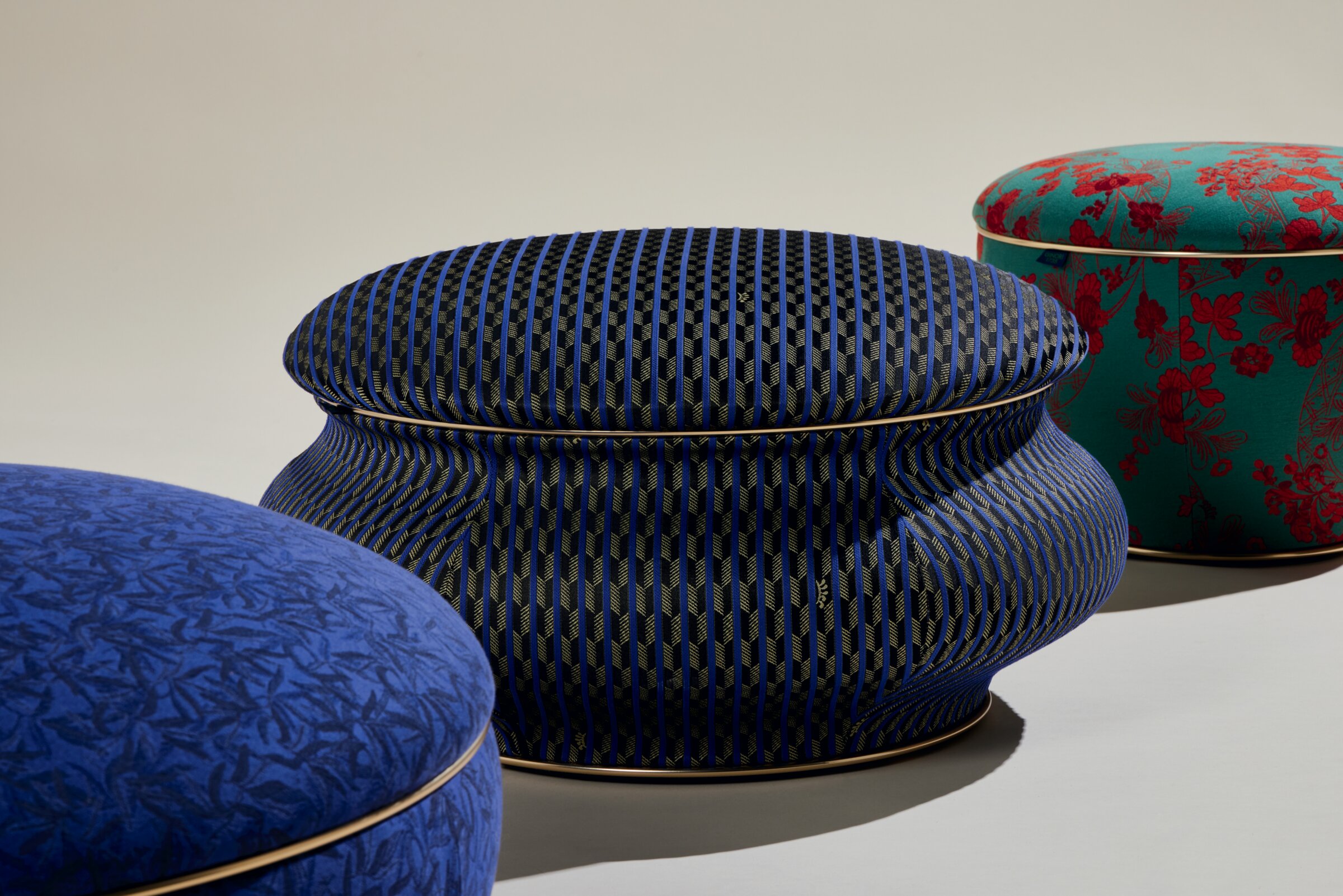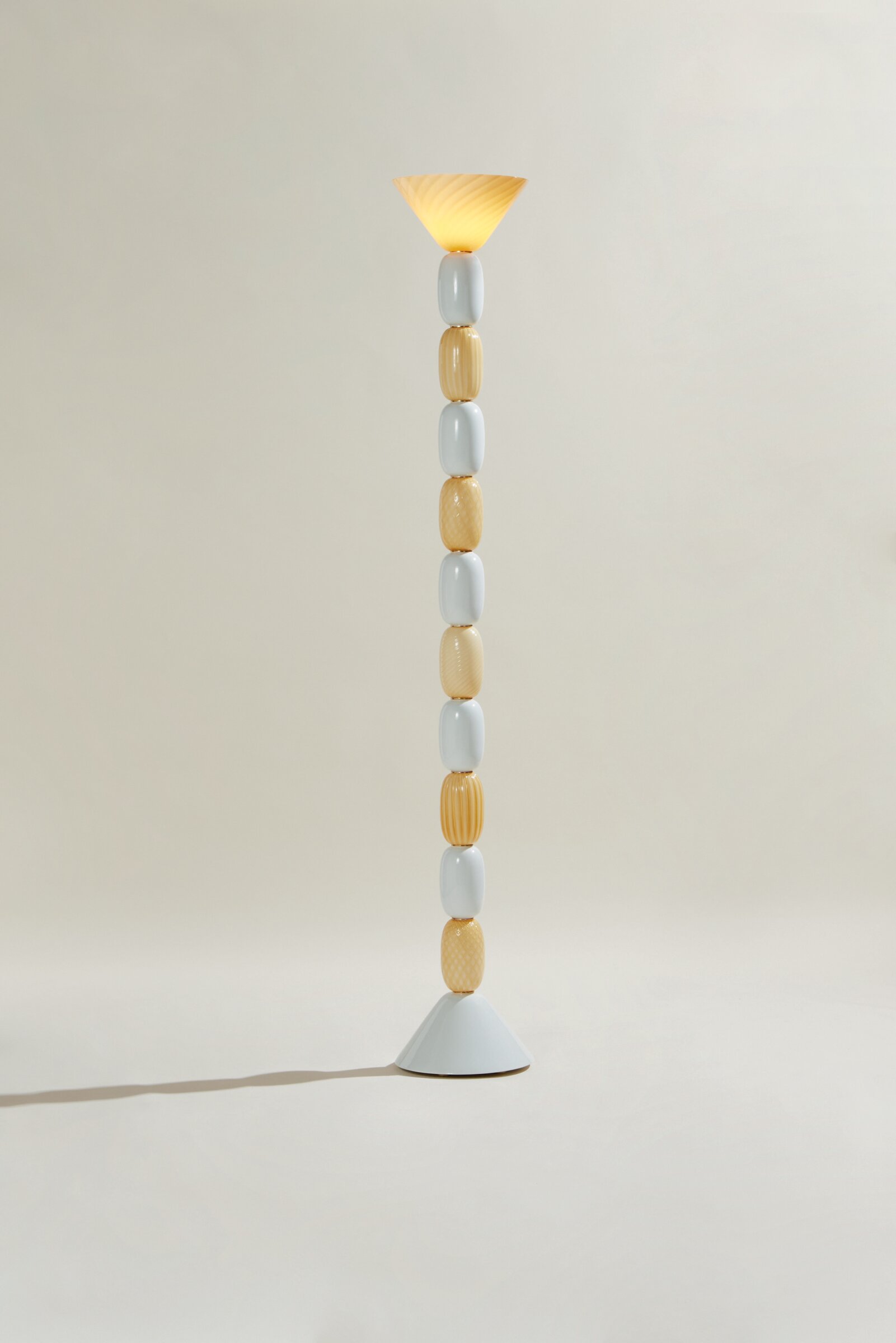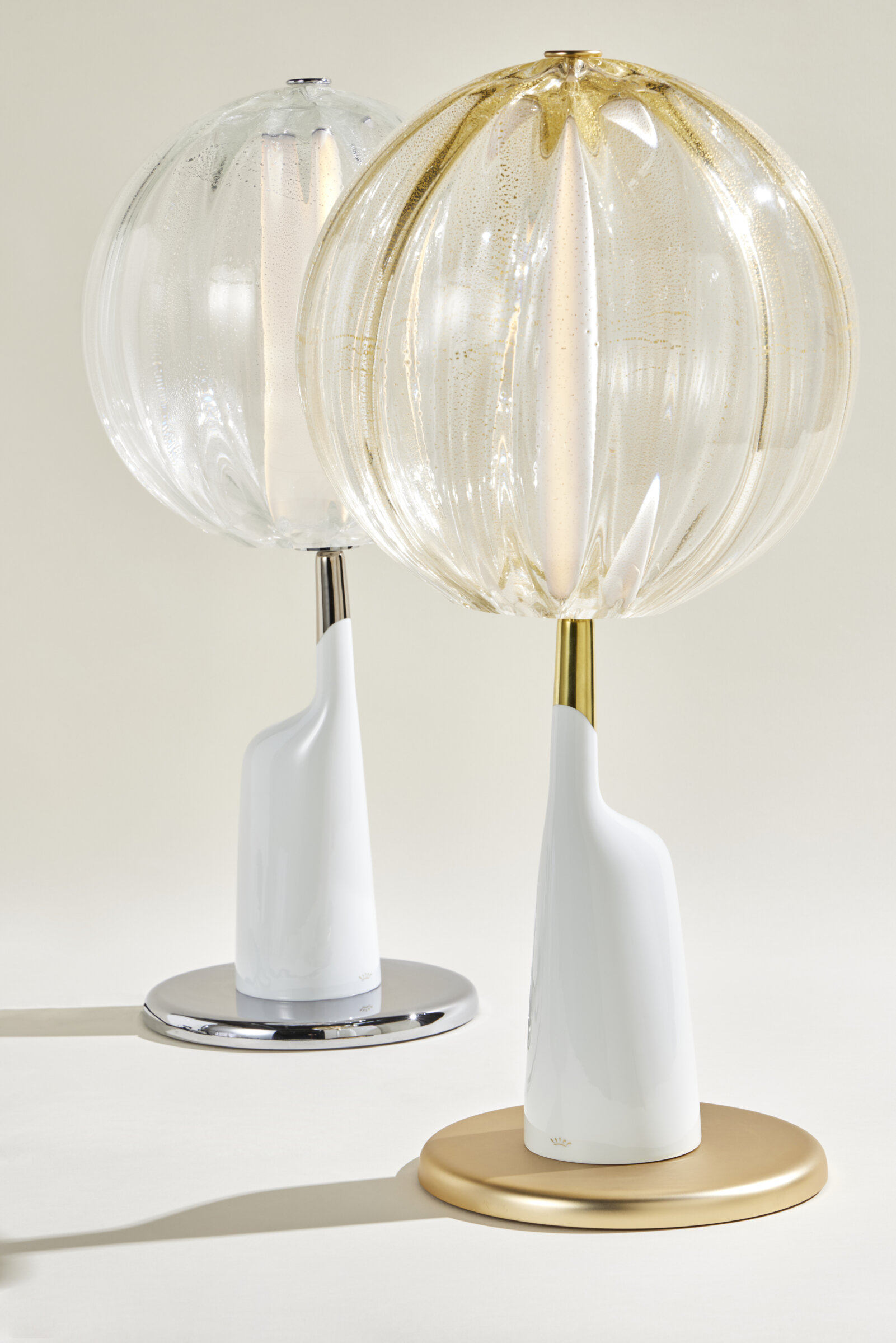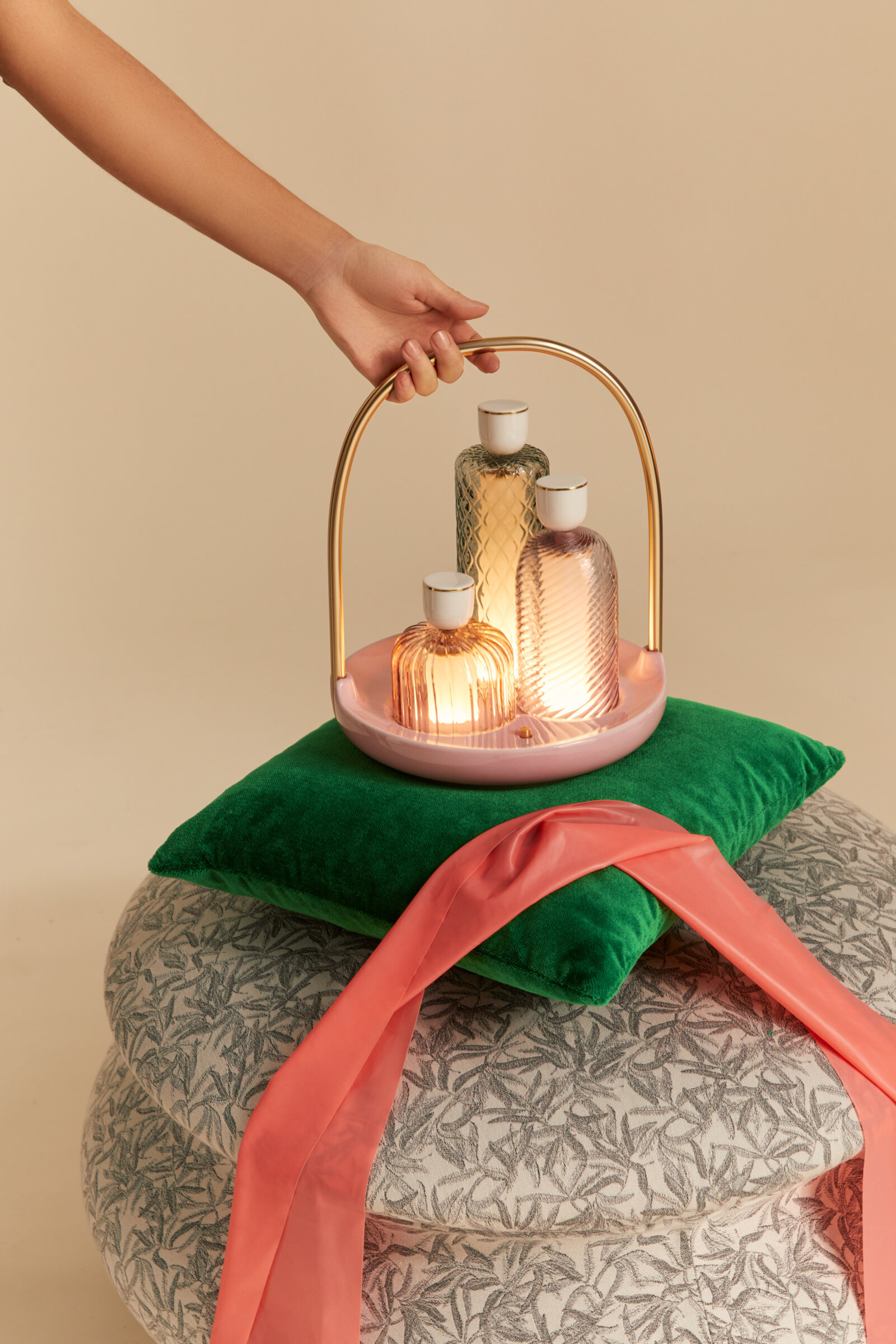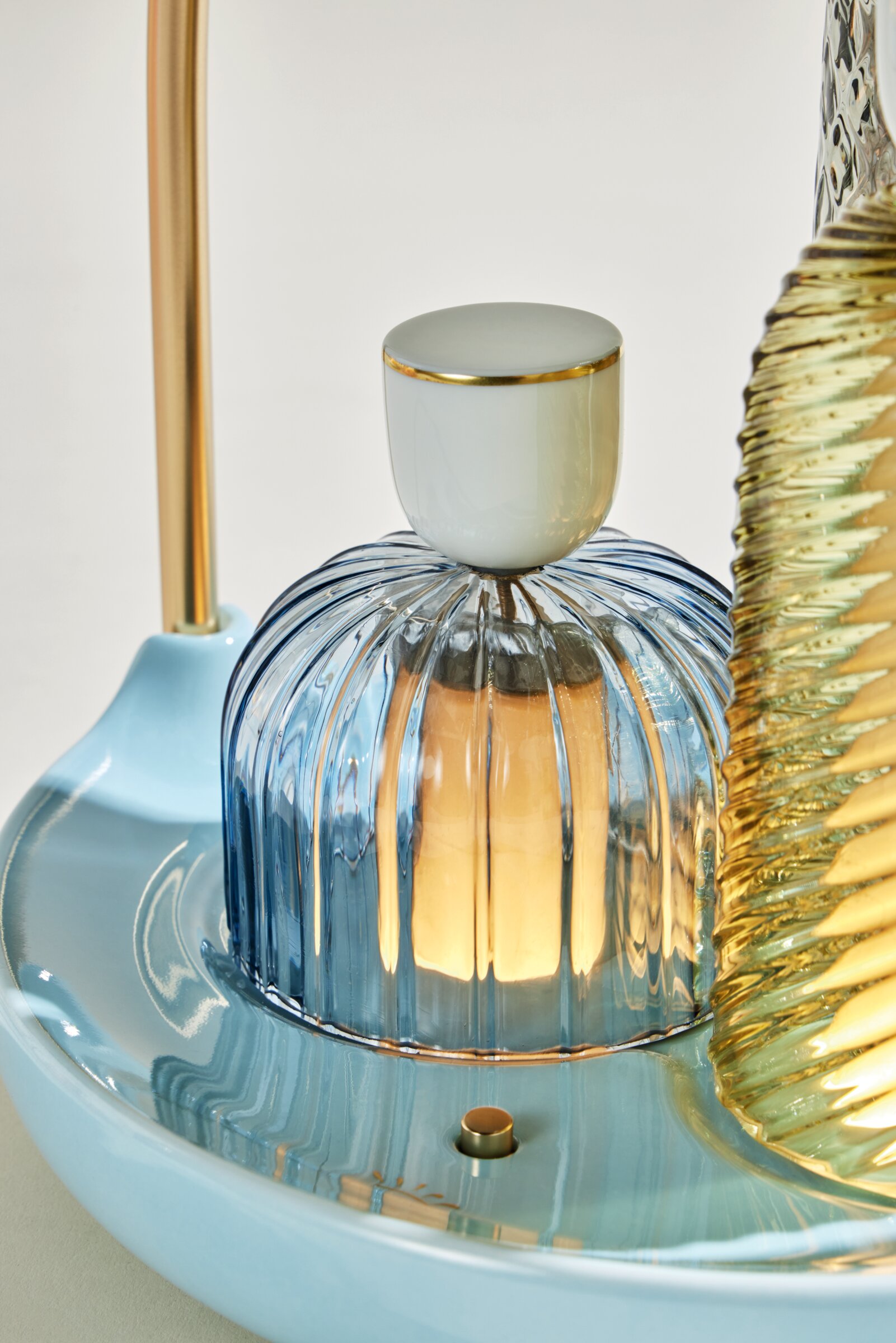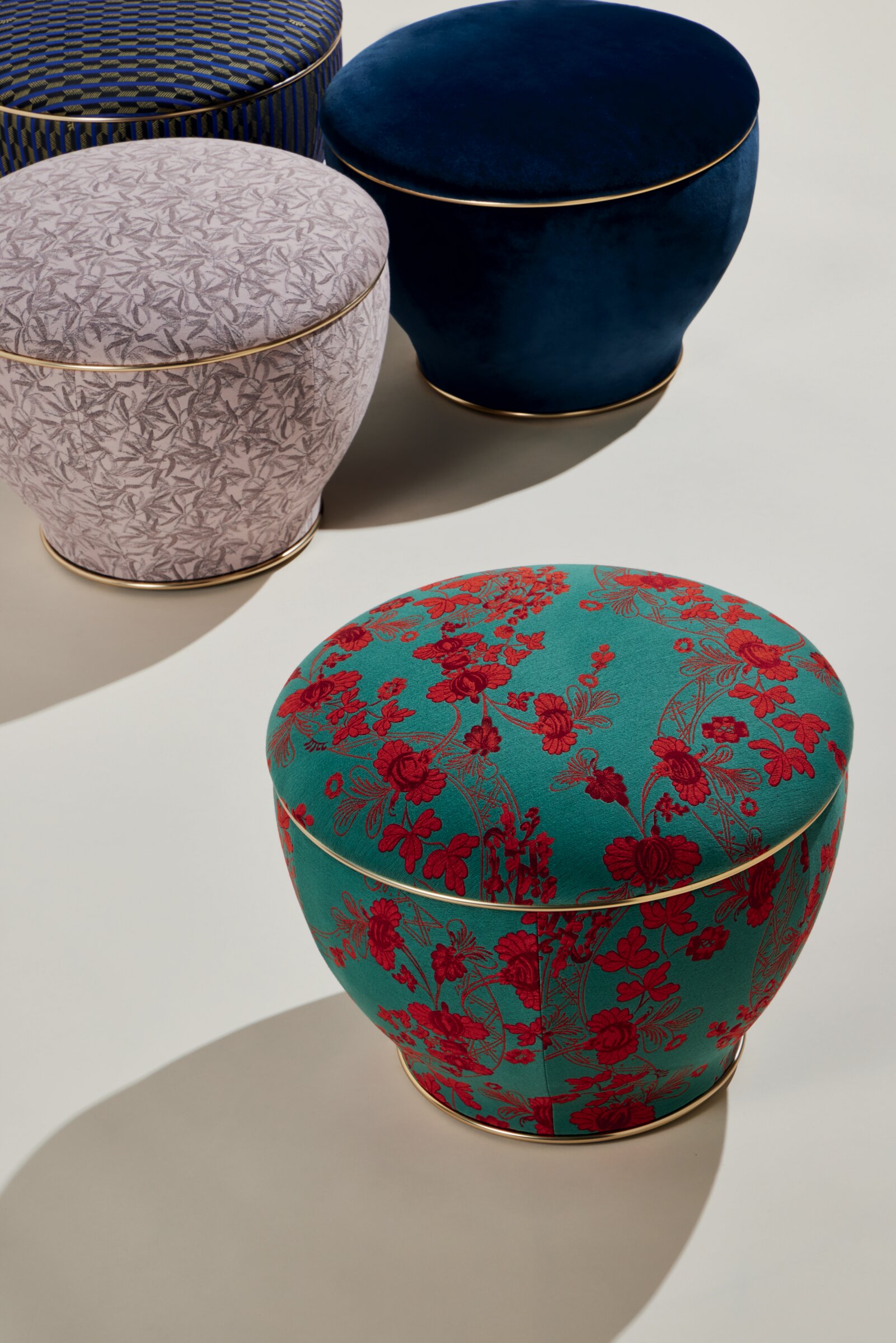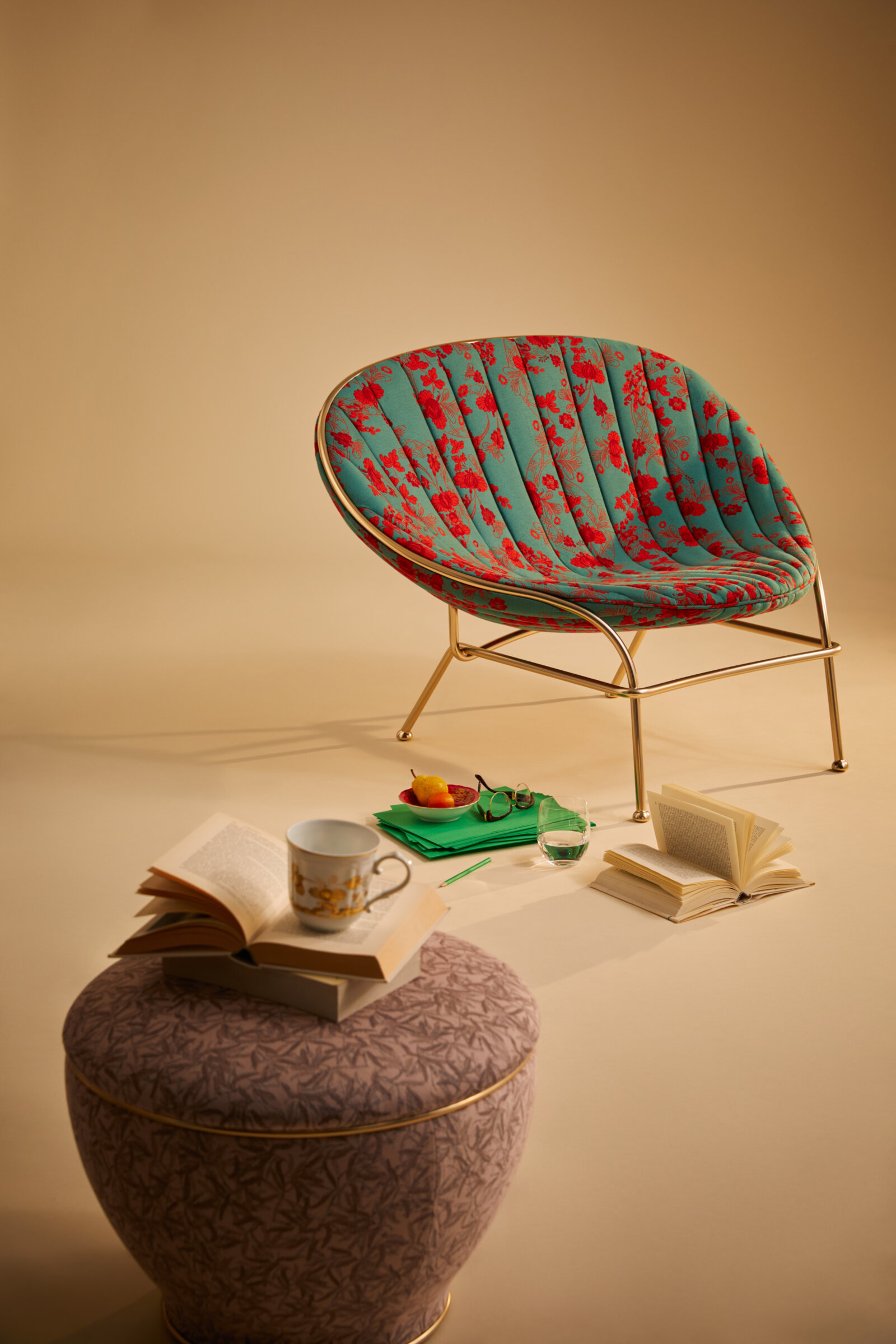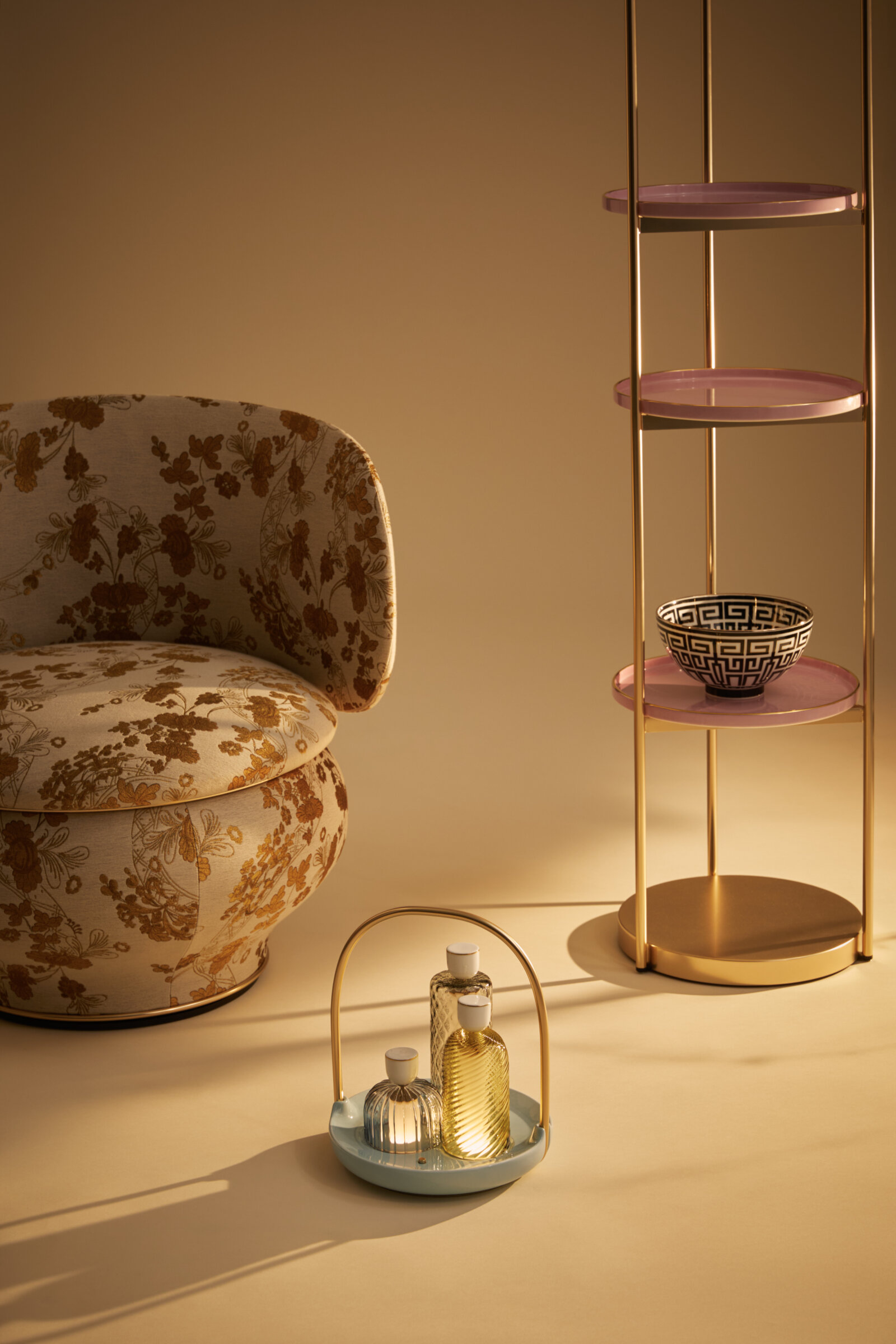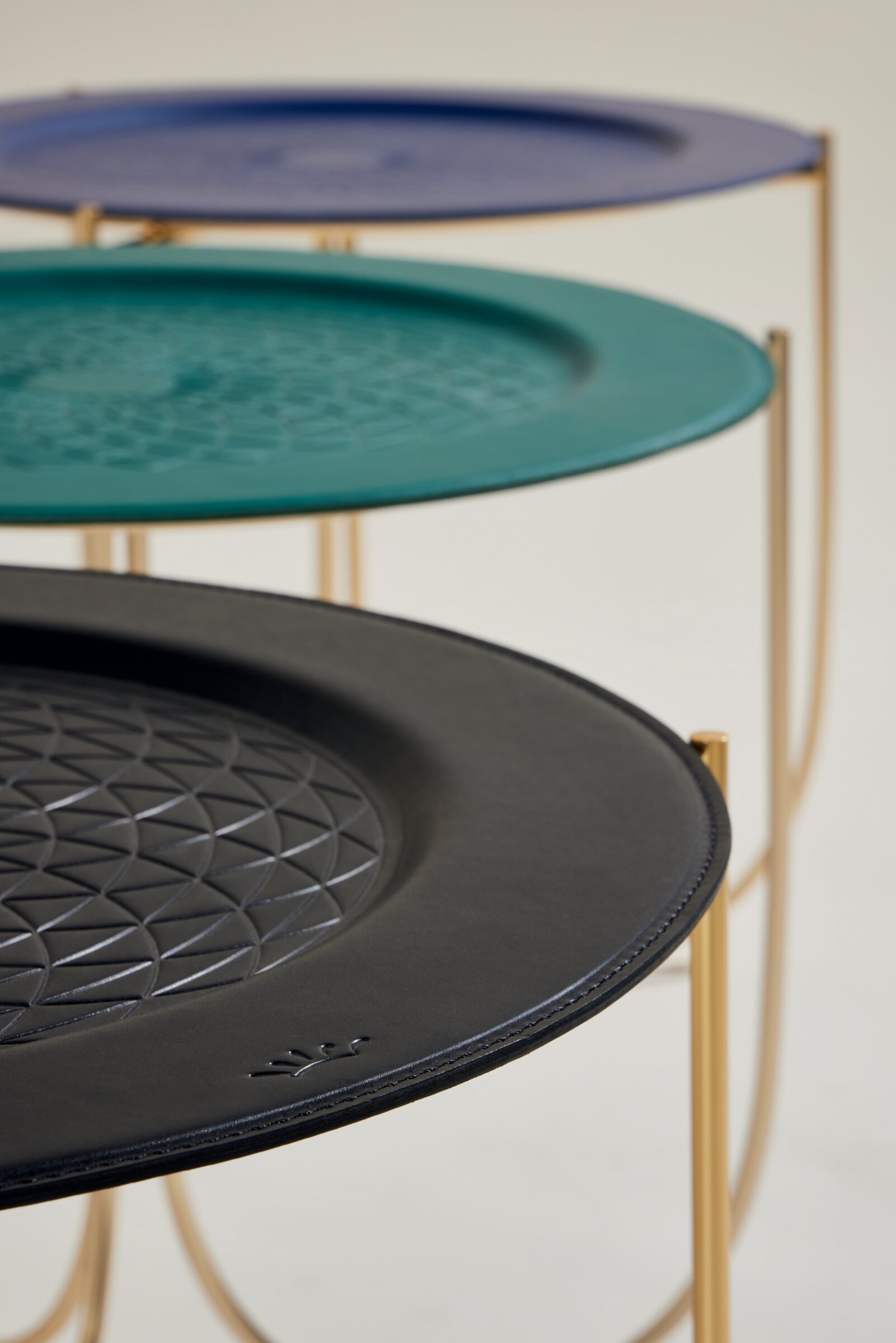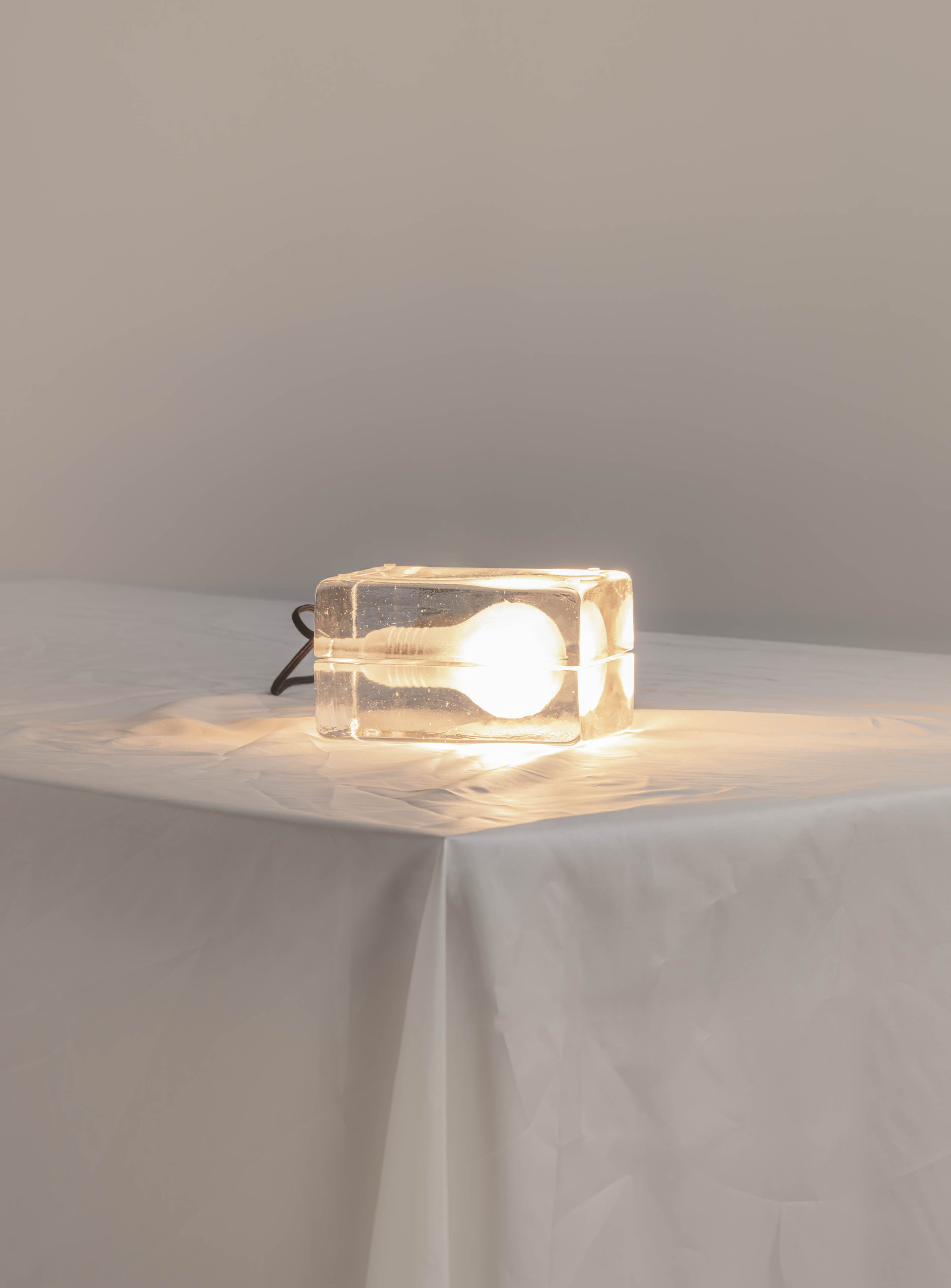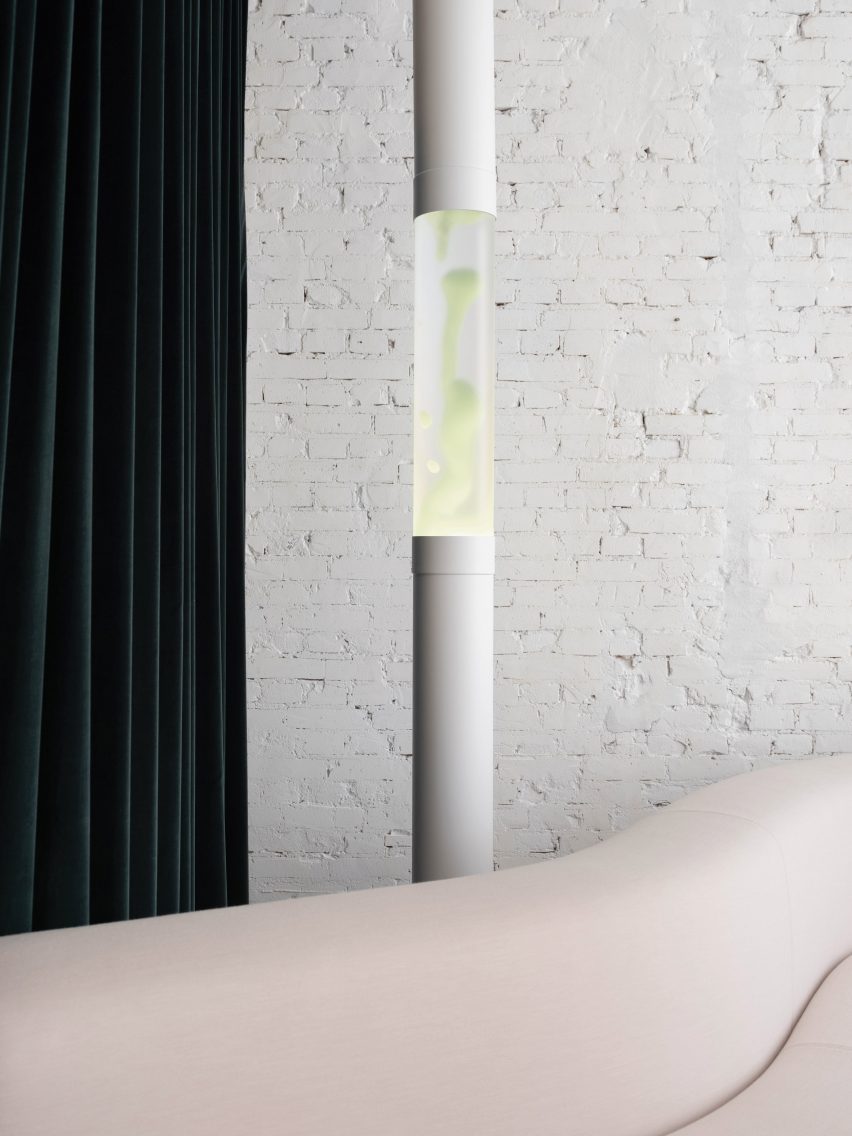Ginori 1735, the classic Italian porcelain manufacturer, enters the world of interior design with the Domus Collection of lighting and furniture. Inspired by Medieval architecture, Renaissance art, and the company’s own 288-year history, Domus is a Neoclassical collection that marries modern trends with art historical touchstones.
Luca Nichetto, a product designer trained at glassware factories in Murano, conceived the Domus collection. To finesse the light fixtures, chairs, and cabinetry, Luca brought in master craftsmen from Barovier & Toso, a Murano glass foundry established in 1295, and Rubelli, a fabric house founded in 1889. Tapping into each company’s legacy, which spans more than 700 years, Luca incorporated some of their most distinctive products into Domus: Ginori 1735’s Orientate Italiano floral pattern, Barovier & Toso’s mouth-blown Venetian crystal, and Rubelli’s jacquard textile.
- The Conterie Ground Floor Lamp stuns with porcelain beads and crystal by Barovier & Toso.
- Barovier & Toso’s hand blown glass tops the Sideris table lamp.
The standouts in the Domus collection incorporate Barovier & Toso’s crystal. On Trinitas, a trio of glass domes cover rechargeable lights. They have spiraled, serrated edges that are slightly off-axis, a comforting sign that they’ve been produced by hand. The jars are topped with Ginori 1735’s porcelain handles, hand painted with a thin gold trim that mimics the lines in the Dulcis pouf. The Conterie Ground Floor Lamp alternates between large beads made from textured crystal and porcelain, referencing a necklace in the Ginori 1735 archive. A closer look at each crystal segment reveals different linear textures and hues, which are produced through ballotòn, rigadìn, and gamenà methods.
- Trinitas highlights Barovier & Toso crystal.
Rubelli’s fabrics also add an important dimension to the collection. They’ve adapted Ginori 1735’s Oriente Italian design, a delicate cluster of carnations that pay homage to the decorative ceramics that have been produced in Faenza, Italy since the first century, into a multi textured jacquard fabric. Other upholstery options, all designed by Luca and derived from glazing techniques and decorations used on Ginori 1735’s porcelain, include Sagitta, a blend of chevrons that appear as a horizontal stripe, Saia, a deconstructed, blurred vertical stripe, and Ondori, a Japanese-inspired leaf pattern that represents virtue and good fortune. They look natural on the Dulcis pouf, an urn-shaped ottoman that takes its form from Ginori 1735 vessels, and the LaVenus lounge chair, which takes on the form of a large clamshell, the womb Venus sprouts from in Sandro Botticelli’s “The Birth of Venus.”
- Dulci poufs in Ginori 1735’s famous Orientate Italiano floral pattern, manufactured in jacquard fabric by Rubelli.
- The Dulcis swivel chair.
Another historical reference is located in the Optique tables, which balances a fine grain leather tabletop on arced, bent steel legs. A radial arrangement of geometric shapes is imprinted into the leather, a pattern that comes from the floor of the Baptistery of San Giovanni in Florence, constructed in the 11th century. The legs, which look like they may teeter over, reference the cathedral’s archways, and their golden color matches the iconoclastic halo that surrounds the fresco of John the Baptist.
Luca’s carefully researched Domus collection does an excellent job of transforming nearly three centuries of Ginori 1735 porcelain into home furnishings. By bringing in the craftsmanship from Italian stalwarts Barovier & Toso and Rubelli, he’s created a collection of one of a kind, heritage pieces that still embrace contemporary trends like gold trim, terrazzo pattern, and bold fabric.
- Detail of the Optique side table.
